
Browse an alphabetical list of photographs. These historical images portray people, places, and events before, during, and after World War II and the Holocaust.
<< Previous | Displaying results 481-490 of 2641 for "Photo" | Next >>
After the liberation of the Wöbbelin camp, US troops forced the townspeople of Ludwigslust to bury the bodies of prisoners killed in the camp. Germany, May 7, 1945.
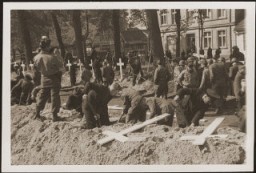
After the liberation of Dora-Mittelbau, local German residents were required to bury the bodies of victims of the camp. Dora-Mittelbau, Germany, April 13–14, 1945.
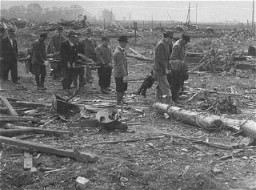
Mourners and local residents shovel dirt into the mass grave of the victims of the Kielce pogrom during the public burial.
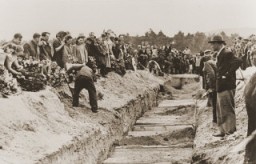
Mourners crowd around a narrow trench as coffins of pogrom victims are placed in a common grave, following a mass burial service. Kielce, Poland, after July 4, 1946.
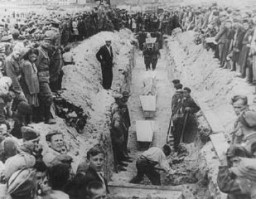
After the liberation of the camp, the US Army ordered the local townspeople to bury the corpses of prisoners killed in the camp. This photograph shows troops observing a moment of silence at a mass funeral for victims of the Wöbbelin camp. Germany, May 7, 1945.
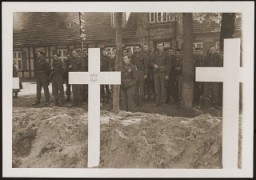
German civilians from Ludwigslust file past the corpses and graves of 200 prisoners from the nearby concentration camp of Wöbbelin. The US Army ordered the townspeople to bury the corpses on the palace grounds of the Archduke of Mecklenburg. Germany, May 7, 1945. Outraged by what they found upon entering the camp, the ranking Allied commanders in the area forced civilians from the nearby towns of Schwerin, Hagenow, and Ludwigslust to view the concentration camp and then bury the bodies of prisoners…
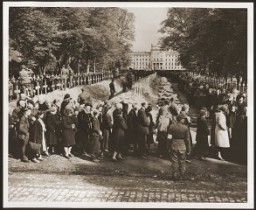
German civilians from Volary attend burial services for the Jewish women exhumed from a mass grave in the town. The victims died at the end of a death march from Helmbrechts, a subcamp of Flossenbürg. Germans were forced to exhume them in order to give the victims proper burial. Volary, Czechoslovakia, May 11, 1945.
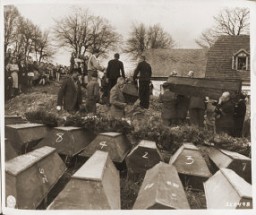
Beginning of the burning of the village of Um Zeifa in Darfur after the Janjaweed looted and attacked. Photograph taken by Brian Steidle, December 2004.
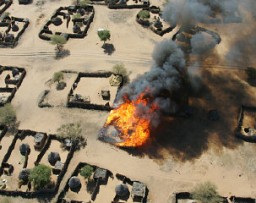
Local residents watch the burning of the ceremonial hall at the Jewish cemetery in Graz during Kristallnacht (the "Night of Broken Glass"). Graz, Austria, November 9–10, 1938.
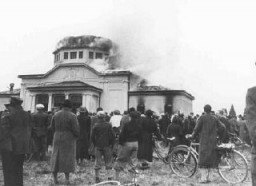
The synagogue in Oberramstadt (a town in southwestern Germany) burns during Kristallnacht. Oberramstadt, Germany, November 9-10, 1938.
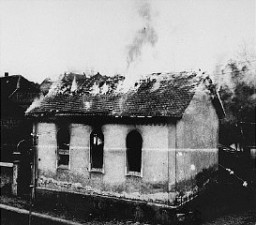
We would like to thank Crown Family Philanthropies, Abe and Ida Cooper Foundation, the Claims Conference, EVZ, and BMF for supporting the ongoing work to create content and resources for the Holocaust Encyclopedia. View the list of donor acknowledgement.